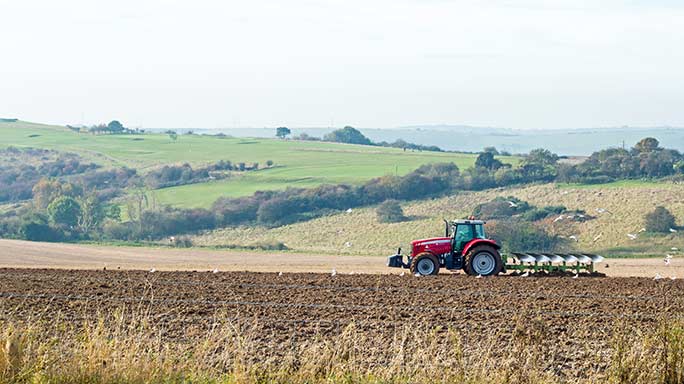Grass Weed Identification

Black grass is the most commercially important grass weed in the UK and much of mainland Europe. This is due to the significant levels of herbicide resistance seen with this weed.
There are a number of confirmed populations of this weed in Ireland that need to be monitored closely.
Importing seed, machinery or bales from the UK carries with it significant risk of black grass infestation so extreme caution is advised with any of these practices.
Like the bromes, black grass thrives in min-till and no-till operations, but populations can be reduced with smart ploughing rotations and spring cropping, allowing for the use of a stale seed bed approach.
It is extremely important to note that if a grower has this weed, and a certain herbicide is not proving effective against it, do not use the same herbicide mode of action on the population again, as this effectively selects the most resistant individuals from the population.
What to do if Herbicide resistance is suspected
If a grower suspects herbicide resistance, send seed samples of the weed to be tested by Teagasc (for free). It is worth noting that many British populations of black grass are resistant to multiple herbicides so care is advised when forming a management strategy for this weed.
Black grass is easily identifiable, it has long, narrow inflorescences that can be green or plum coloured. It grows upright and can tower over the crop canopy.
If you find populations of black grass in the field, spot-spray with glyphosate as soon as possible before seeds ripen and become viable. Exercise extreme vigilance with fields containing black grass. Care must be taken to clean machinery after harvesting affected fields to minimise the spread of seed.
Management
Irish certified seed has ZERO tolerance for black grass. If importing seed from the UK, ask for a weed certificate.
- Stale seed bed approach works well as black grass germinates in the autumn.
- Later sowing date allows glyphosate application to cultivated stubble.
- Spring cropping facilitates more than one stale seed bed.
- Spot-spray small populations before they get a chance to produce viable seed.
- Use a well-thought out plough rotation to minimise seed return (burying seed destroys 75% of seed per year), be careful not to plough up old seeds.
- Use a well-thought out plough rotation to minimise seed return (burying seed destroys 75% of seed per year), be careful not to plough up old seeds.
Herbicide Resistance
- 98% of UK black grass is resistant to at least one herbicide mode of action, and 46% have multiple resistance due to herbicide metabolism abilities (Cook et al., 2014).
- If resistance is suspected, send ripe seed samples to be tested in Oak Park.
- Do not use the same herbicide mode of action on the population repeatedly.
- Do not use reduced doses of herbicides as this contributes to the evolution of multiple herbicide resistance.
- Exercise extreme care with machinery that has worked in a field containing black grass to avoid the spread of resistant seed.
Protocol for reducing blackgrass seed infestation on farm
- Desiccate crop before blackgrass produces seed in order to prevent seed return. Clean down tractor and sprayer before leaving the field.
- Hand rogue plants
- Harvest the crop last – to avoid contaminating other fields
- Turn up fan on the combine as high as possible to blow out as much seed as possible.
- Chop the straw; DO NOT BALE – to avoid contaminating balers and spreading seed in straw.
- Clean down the combine thoroughly before leaving the field including concave, drums, rotors, straw walkers, grain return pans, intake, header, straw chopper, axels, all covers, all flat surfaces etc. Run the combine before leaving the field.
You can download the Agronomy Autumn brochure here.
For more information please contact your local Glanbia Ireland Agronomist.
First Published 23 September 2019
Tagged with: Tillage